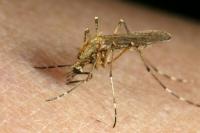VIDEO: Microscope: Parts and their function
There are several microscopes that can be used in the classes or used in the laboratory to enlarge small things such as cell components and the like. If you know the individual parts of the microscope and their respective functions, you will be able to work better with them.
The individual parts of the microscope
- A microscope consists of several parts. Above all, the base of the microscope is an important component, the function of which is solely to give the device a stable hold.
- There is often a light source on the foot, which ensures that an optimal incidence of light falls on the object to be observed. If you try to observe the object with and without light, you will notice clear differences.
- The wheels that are attached to the frame above the foot are called fine and large drives. With these you can move both the microscope and the slide and thus perform better observation.
- The object table and a condenser are also attached to this frame, which is used to bundle the light and direct it better onto the object. On the other hand, the object to be observed is always located on the object table.
The microscope and its parts - a simple explanation of the electron microscope
In cytology, the branch of biology that deals with cells, ...
Other components and their function
- The slide does not belong directly to the microscope, but is important nonetheless. Usually this is a small glass plate that is attached to the stage with clamps. For example, you can place a drop of blood, a skin flake or a small leaf on this glass plate and enlarge it.
- If you hold the microscope at the top, you will see the objective above the stage, which is for the Magnification is responsible, and the object turret, with which you can set different magnifications can adjust.
- Finally, you observe the object when you look through the eyepiece, which is located at the top of the tubule, the tube. Use either the left or the right eye for an optimal view.
Now you know all the parts of the microscope and what they do. You can check these while looking at the microscope. Have lots of fun with it!

